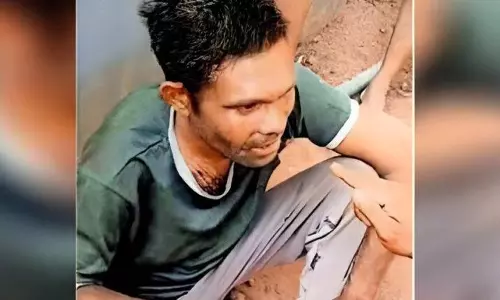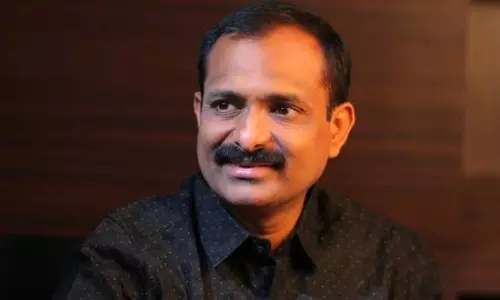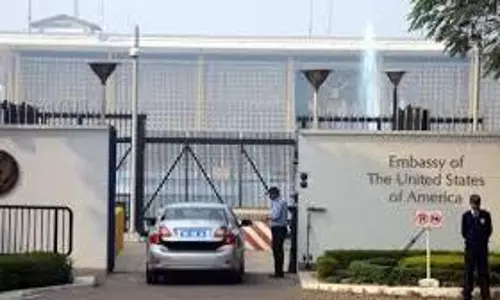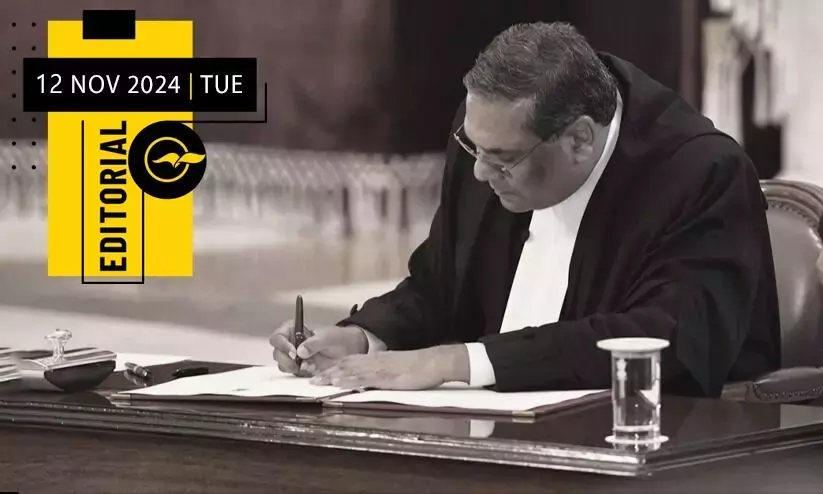
The new helmsman of the Supreme Court
text_fieldsThe Supreme Court of India stands on the precipice of transition with the recent appointment of Justice Sanjiv Khanna as the next Chief Justice of India. With a tenure limited to six months until his retirement, his elevation symbolizes both continuity and change in India’s judicial landscape, where Justice Khanna’s reputation for integrity is widely acknowledged. Khanna is the nephew of the renowned Justice H.R. Khanna, who famously withstood pressures during the Indira Gandhi era, choosing to prioritize judicial principles over political acquiescence. His uncle’s dissent in the infamous Habeas Corpus case, which upheld the right to liberty amid Emergency-era restrictions, cemented the family’s legacy as defenders of judicial independence. Justice Sanjiv Khanna, in his own right, has mirrored these values throughout his legal career, which began humbly at the Tis Hazari Court in Delhi and eventually led to the apex court of the nation.
Justice Khanna’s judicial philosophy, often leaning toward transparency and accountability, has been evident in his significant contributions as a Supreme Court judge. Perhaps one of his most notable judgments involved bringing the office of the Chief Justice under the Right to Information (RTI) Act, ensuring that even the judiciary’s highest office remains within the ambit of transparency. This landmark decision was a testament to his belief that justice must be both seen and felt to be done by the public. Justice Khanna underscored that the Chief Justice's office could strike a balance between public interest and privacy, tasking the Chief Public Information Officer with discerning the sensitivity and necessity of RTI disclosures. Furthermore, his rulings on electoral transparency have made waves. In February last year, Justice Khanna delivered a critical verdict on the contentious issue of electoral bonds, highlighting their potential to erode transparency and invite corruption. This stance underscores his commitment to a transparent electoral process that upholds democratic integrity, even as certain political powers grapple with the implications of such transparency.
Justice Khanna’s inclination towards upholding judicial independence was also visible in his handling of cases involving technology in the electoral process, particularly his guidance on the use of electronic voting machines. Recognizing the public’s skepticism, he called for mechanisms that would remove lingering doubts, thereby reinforcing public trust in the democratic process. His conscientious approach indicates that, as Chief Justice, he will continue to advocate for clarity and credibility within judicial procedures, ensuring that citizens’ rights are protected within a transparent and accountable system. Over the next six months, Justice Khanna will have to address high-stakes cases, including those surrounding the minority status of Aligarh Muslim University and the contentious issue of marital rape. These cases will likely serve as defining moments for his tenure, testing his commitment to empathetic and swift judicial processes. His emphasis on timely and high-quality judgments has resonated throughout his career, and he has repeatedly condemned case delays and backlogs that hinder citizens’ access to justice.
At the National Conference of District Judges last year, Justice Khanna emphasized that the judiciary’s merit should not be judged by the grandeur of courtrooms but by the fairness, compassion, and empathy that defines its decisions. This belief, expressed in the presence of the Prime Minister reflects his insistence on humanizing the judicial process, a perspective that sets him apart in an era where judicial impartiality is frequently questioned. Khanna’s immediate predecessor brought a strong legal mind to the office, yet there were concerns in the later stages of his tenure about decisions that appeared to blur the lines between the judiciary and the executive. This shift towards a close relationship with other branches of government underscored the delicate balance that a Chief Justice must maintain between the judiciary, the executive, and the legislature. In Justice Khanna, there lies hope for a renewed adherence to these boundaries, which serve as the bedrock of judicial independence and democratic stability.
As Justice Sanjiv Khanna steps into his role, the country watches with both high expectations and caution. His track record signals a dedication to maintaining an independent judiciary that serves as a check on power rather than an extension of it. In an era where democratic principles face unprecedented challenges, Justice Khanna’s stewardship of the Supreme Court could serve as a vital bulwark in upholding the rule of law. The path may be fraught, and his time limited, yet his leadership has the potential to shape the judiciary’s course for years to come.























